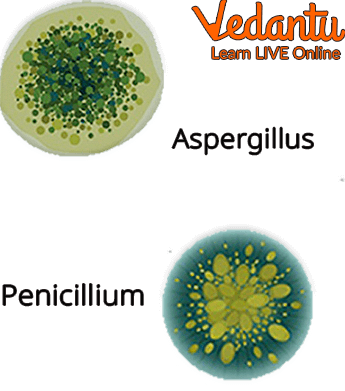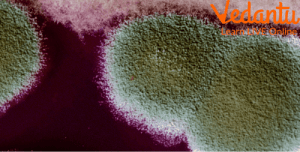




Why Are Moulds Important in Our Environment?
Moulds can be found on plants, in the soil, or on dead or decaying matter. Moulds are essential for the decomposition of leaves, wood, and other vegetation outside. Moulds are members of the kingdom of fungi. Since they are not plants and lack chlorophyll, they must consume plant matter and other organic materials in order to survive. Without moulds, the amount of dead plant matter in our environment would be overwhelming.
To reproduce, moulds release tiny spores similar to how some plants release seeds. Mould spores can be found on indoor and outdoor surfaces as well as in the air indoors and outdoors. Mould spores may start to grow and eat whatever they are growing on when they land on a moist surface. By removing mould growth, one can avoid damage to building materials and furniture as well as save money because moulds gradually deteriorate the things they grow on.

Mould
What is a Mould?
Moulds are variants of fungi. They differ from other fungi in a number of ways. They are larger than yeasts, which typically have a single cell, but they lack the expanding, obvious structures found in mushrooms. Mould comes in a huge variety of species and types. All over the world, both inside and outside, they grow in wet environments.
Moulds are not able to make their own food, like other fungi. Despite the fact that most moulds eat dead plant and animal tissues, some moulds do consume living things. These can take the form of leaves that have fallen from a tree or products made from plants or animals, such as food, paper, fabric, and a wide range of others.
An English scientist discovered in 1928 that a mould known as Penicillium notatum was capable of eradicating many of the typical human bacteria. From that mould, scientists later produced the medication penicillin. Similar drugs are made using other moulds. Blue cheese is one of the cheeses that can be made using moulds. Moulds help in removing fallen leaves and dead trees from forests.
Moulds often grow in buildings that have too much moisture. These moulds can cause such illnesses as rashes, breathing problems, and lung infections. Moulds can also ruin foods. If bread, cheese, and fruits and vegetables are allowed to sit too long, mould spores in the air can land on them and begin to grow. As they grow they eat away at the food.
Types of Mould
Mould comes in a wide variety of forms.
Rhizopus stolonifer, also referred to as black bread mould, is one of the more prevalent varieties. And despite its name, it also likes other foods like fruits and vegetables.
Penicillium, which is a well-known variety of moulds and the source of the antibiotic Penicillin, is another. Penicillium can be found in many different places, including water-damaged buildings and different foods.
Aspergillus is a mould that is known to come in a number of cancer-causing varieties and, when found indoors, can seriously affect respiratory health.

Types of Mould
What is Mould Fungi?
A fungus is referred to as mould. These can be found in any indoor or outdoor environment and are either green, purple, black, white, or orange in colour. As long as there is oxygen nearby, they can thrive. Spores that are airborne and of light nature are used for their reproduction. Although they are unharmful in small quantities, if they land on a moist surface, they will begin to grow. The spores will begin to release from them, and once they do, they can be inhaled to travel to the respiratory system. As a result, it may cause illness in people.
What is a Bread Mould?
Bread mould is a simple fungus that takes food and nutrients from the bread and damages the bread surface. Mould growing on the bread can be microscopic fungi belonging to different species like Penicillium, Rhizopus, Aspergillus, Monascus and Fusarium. They are of different shapes and colours depending on the species.

Bread Mould
Summary
The kingdom of fungi includes mould, which is a type of fungus. Additionally, mould, yeast, mushrooms, lichens, and truffles are members of the kingdom of fungi. Moulds are fungi with filaments. Fine, branching filaments called hyphae make up mycelium (singular hypha).
FAQs on What Is a Mould? Meaning, Types & Importance
1. What is a mould in biology?
In biology, a mould is a type of fungus that grows in the form of multicellular, thread-like structures called hyphae. These hyphae form a tangled mass known as a mycelium, which is the fuzzy, colourful growth you often see on stale food or damp surfaces. Moulds play a crucial role as decomposers in ecosystems.
2. What is the common bread mould and how does it grow?
The most common bread mould is Rhizopus stolonifer. It grows when its microscopic spores, which are always present in the air, land on a slice of bread. If the conditions are right (moisture and warmth), the spore germinates and grows thread-like hyphae that absorb nutrients from the bread. It then develops tiny black spore cases (sporangia) on stalks, which release new spores to spread.
3. What is the main difference between moulds (fungi) and bacteria?
The primary difference lies in their cell structure. Moulds are eukaryotic organisms, meaning their cells have a true nucleus and other membrane-bound organelles. They are also multicellular. In contrast, bacteria are prokaryotic organisms, which are unicellular and lack a true nucleus; their genetic material floats freely in the cytoplasm.
4. What are the ideal conditions for mould to grow?
Mould thrives in specific conditions. The four key requirements for mould growth are:
- Moisture: Dampness or high humidity is essential for spores to germinate.
- Food Source: Moulds feed on organic materials like bread, fruits, wood, and paper.
- Warmth: Most moulds prefer warm temperatures, but some can grow in cooler, refrigerated environments.
- Oxygen: As aerobic organisms, moulds require oxygen to live and grow.
5. How are moulds different from other fungi like yeasts and mushrooms?
While all are part of the Fungi kingdom, they differ in structure and form. Moulds are characterised by their filamentous, multicellular hyphae. Yeasts, on the other hand, are typically unicellular and reproduce by budding. Mushrooms are the large, complex, visible reproductive structures (fruiting bodies) of certain fungi, with most of the organism living underground as a mycelial network.
6. Are all types of mould harmful?
No, not all moulds are harmful. While some moulds can cause allergies, respiratory issues, or produce harmful toxins (mycotoxins), many are beneficial. For example, the mould Penicillium is famously used to produce the life-saving antibiotic penicillin. Other moulds are essential in making certain foods, like blue cheese.
7. How can we prevent mould from growing on food at home?
You can prevent mould growth on food by controlling the conditions it needs to thrive. Key methods include storing perishable food in the refrigerator, keeping bread and baked goods in cool, dry places or airtight containers, cleaning up food spills promptly, and ensuring good ventilation in your kitchen to reduce humidity.





















